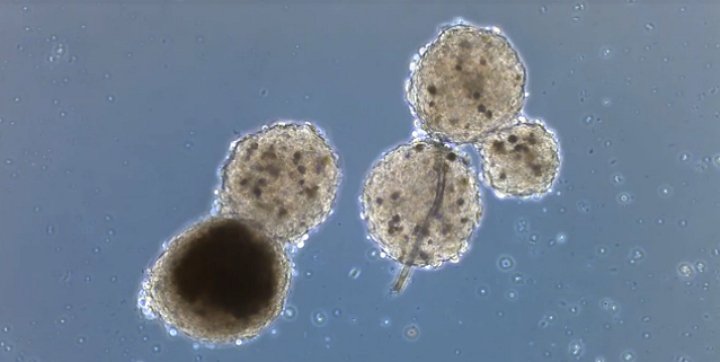Pulsating heart tissue using 3D printing and genetic reprogramming
Researchers at Wake Forest Medical Institute have created pulsating heart cells using 3D printing.

To “collect” a small cardiac organoid, scientists first needed to create suitable biological material. For this, skin cells were genetically reprogrammed into induced pluripotent stem cells - universal soldiers that can develop into almost any type of cell.

After this, the stem cells were turned into organoids of the heart, each measuring a quarter millimeter in size. Then, miniature balls using a specialized 3D printer, California scientists managed to collect in a beating heart shred.

According to Ive Mead, a graduate of the California Medical Institute, 3D-printed heart cells have a pulse and can only function in an environment with a human body temperature. While this is only a small piece of matter, however, like a living heart, it responds to electrical and chemical stimuli, as a result of which it changes its "rhythm".
A short video from Popular Mechanics.
For the implementation of this project, $ 24 million was allocated, and it is primarily intended for testing chemical and biological agents on living human organs. However, given the successful development of the project, one can count on full-fledged human organs for transplantation in the near future.
Now researchers are working on creating a full three-dimensional heart, which will allow cells to fully copy the abilities of the heart muscle.

To “collect” a small cardiac organoid, scientists first needed to create suitable biological material. For this, skin cells were genetically reprogrammed into induced pluripotent stem cells - universal soldiers that can develop into almost any type of cell.

After this, the stem cells were turned into organoids of the heart, each measuring a quarter millimeter in size. Then, miniature balls using a specialized 3D printer, California scientists managed to collect in a beating heart shred.

According to Ive Mead, a graduate of the California Medical Institute, 3D-printed heart cells have a pulse and can only function in an environment with a human body temperature. While this is only a small piece of matter, however, like a living heart, it responds to electrical and chemical stimuli, as a result of which it changes its "rhythm".
A short video from Popular Mechanics.
For the implementation of this project, $ 24 million was allocated, and it is primarily intended for testing chemical and biological agents on living human organs. However, given the successful development of the project, one can count on full-fledged human organs for transplantation in the near future.
Now researchers are working on creating a full three-dimensional heart, which will allow cells to fully copy the abilities of the heart muscle.
